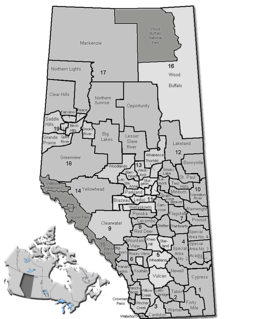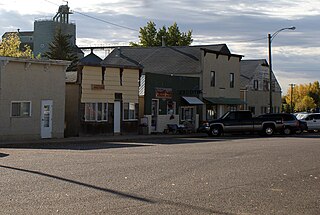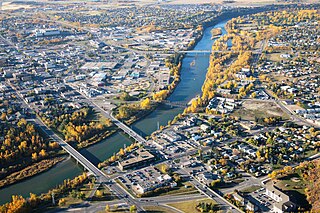| ||
 Distribution of Alberta's 269 urban municipalities | ||
Alberta has provincial legislation allowing its municipalities to conduct municipal censuses between April 1 and June 30 inclusive. [1] [2] Municipalities choose to conduct their own censuses for multiple reasons such as: to better inform municipal service planning and provision; to capitalize on per capita based grant funding from higher levels of government; or to simply update their populations since the last federal census. [3]

Alberta is a western province of Canada. With an estimated population of 4,067,175 as of 2016 census, it is Canada's fourth most populous province and the most populous of Canada's three prairie provinces. Its area is about 660,000 square kilometres (250,000 sq mi). Alberta and its neighbour Saskatchewan were districts of the Northwest Territories until they were established as provinces on September 1, 1905. The premier has been Rachel Notley since May 2015.
Four provinces and territories in Canada have legislation that allow municipalities to conduct a municipal census. These include the provinces of Alberta and Saskatchewan and the territories of Nunavut and Yukon. Of these four provinces and territories, municipalities in Alberta were the only ones that exercise the option to conduct a municipal census as of 2006.

A census is the procedure of systematically acquiring and recording information about the members of a given population. The term is used mostly in connection with national population and housing censuses; other common censuses include agriculture, business, and traffic censuses. The United Nations defines the essential features of population and housing censuses as "individual enumeration, universality within a defined territory, simultaneity and defined periodicity", and recommends that population censuses be taken at least every 10 years. United Nations recommendations also cover census topics to be collected, official definitions, classifications and other useful information to co-ordinate international practice.
Contents
Alberta began the year of 2017 with 354 municipalities. [4] Of these, 35 (9.9%) conducted a municipal census in 2017. Alberta Municipal Affairs recognized those conducted by 34 of these municipalities. [5] By municipal status, it recognized those conducted by 7 of Alberta's 18 cities, 16 of 107 towns, 10 of 87 villages, 1 of its 51 summer villages, and 1 of 64 municipal districts. [5] [lower-alpha 1]
Events from the year 2017 in Canada.
Alberta Municipal Affairs is a ministry of the Executive Council of Alberta. Its major responsibilities include assisting municipalities in the provision of local government, administering the assessment of linear property in Alberta, administering a safety system for the construction and maintenance of buildings and equipment, and managing Alberta's network of municipal and library system boards.
Some municipalities achieved population milestones as a result of their 2017 censuses. Fort Saskatchewan exceeded 25,000 residents, while Chestermere surpassed 20,000 people and Crossfield grew beyond the 3,000 mark for the first time.

Fort Saskatchewan is a city in Alberta, Canada, 25 kilometres (16 mi) northeast of Edmonton, Alberta's capital city, along the North Saskatchewan River. Fort Saskatchewan is part of the Edmonton census metropolitan area and is one of 24 municipalities that constitute the Edmonton Metropolitan Region Board (EMRB). Fort Saskatchewan's population in the 2016 federal census was 24,149 while it was 24,569 in the city's 2016 municipal census.

Chestermere, originally named Chestermere Lake, is a city in the Canadian province of Alberta, within Rocky View County. It is largely a commuter town of Calgary and is a member municipality of the Calgary Regional Partnership. The city, which surrounds Chestermere Lake, was known as Chestermere Lake from 1977 to 1993.

Crossfield is a town in southern Alberta, Canada within Rocky View County. It is located on Highway 2A 43 km (27 mi) north of the City of Calgary.








